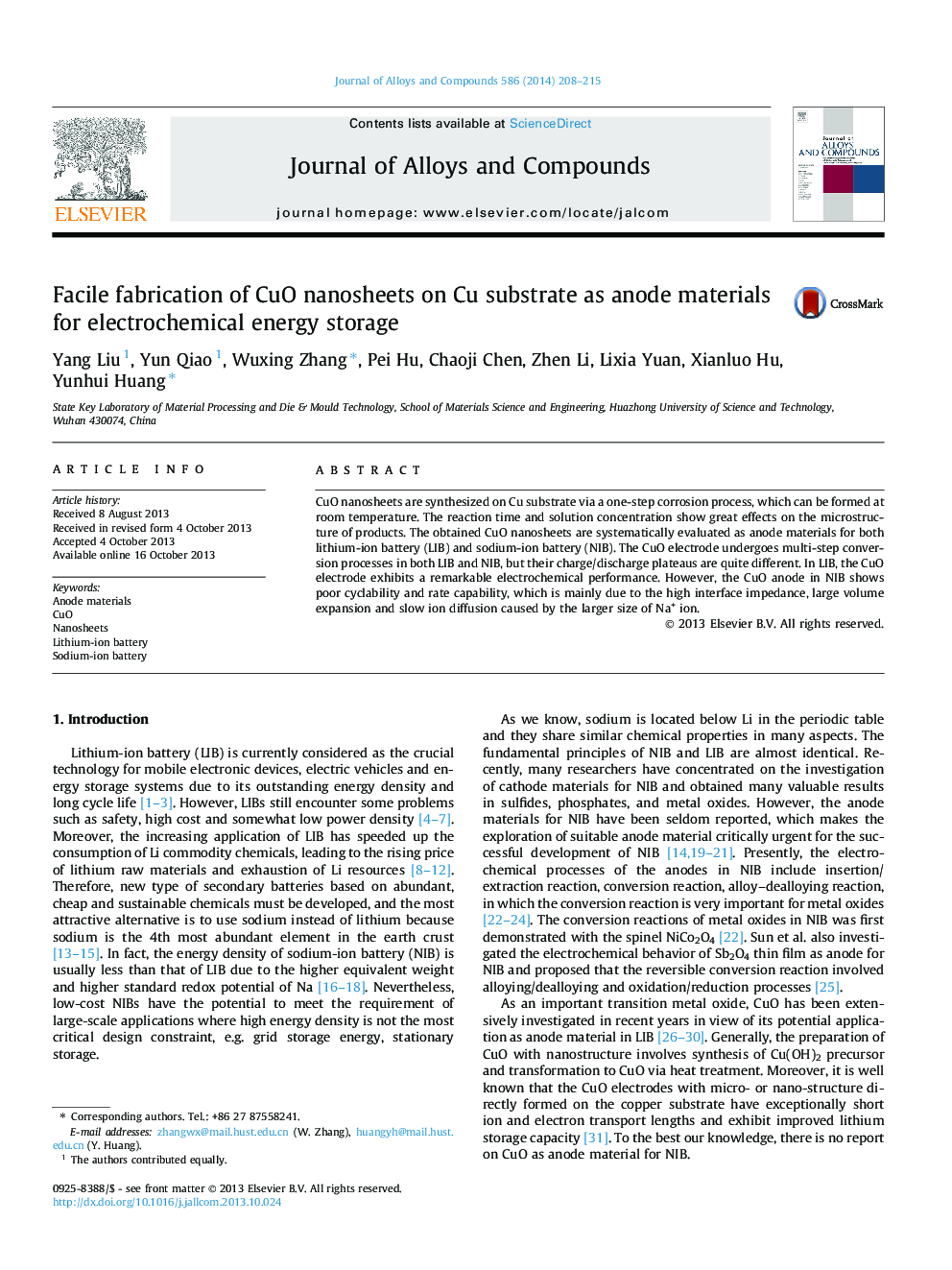| Article ID | Journal | Published Year | Pages | File Type |
|---|---|---|---|---|
| 1612637 | Journal of Alloys and Compounds | 2014 | 8 Pages |
Abstract
CuO nanosheets are synthesized on Cu substrate via a one-step corrosion process, which can be formed at room temperature. The reaction time and solution concentration show great effects on the microstructure of products. The obtained CuO nanosheets are systematically evaluated as anode materials for both lithium-ion battery (LIB) and sodium-ion battery (NIB). The CuO electrode undergoes multi-step conversion processes in both LIB and NIB, but their charge/discharge plateaus are quite different. In LIB, the CuO electrode exhibits a remarkable electrochemical performance. However, the CuO anode in NIB shows poor cyclability and rate capability, which is mainly due to the high interface impedance, large volume expansion and slow ion diffusion caused by the larger size of Na+ ion.
Related Topics
Physical Sciences and Engineering
Materials Science
Metals and Alloys
Authors
Yang Liu, Yun Qiao, Wuxing Zhang, Pei Hu, Chaoji Chen, Zhen Li, Lixia Yuan, Xianluo Hu, Yunhui Huang,
